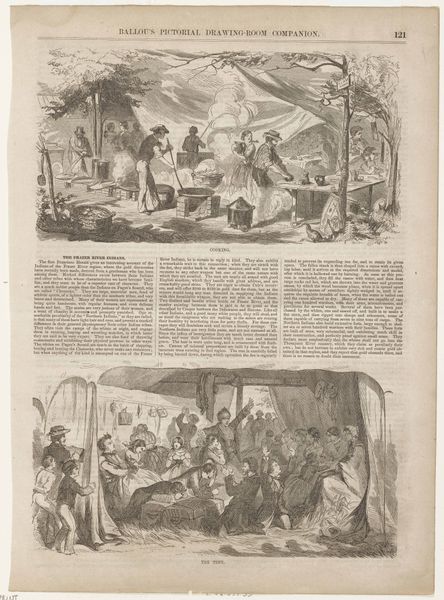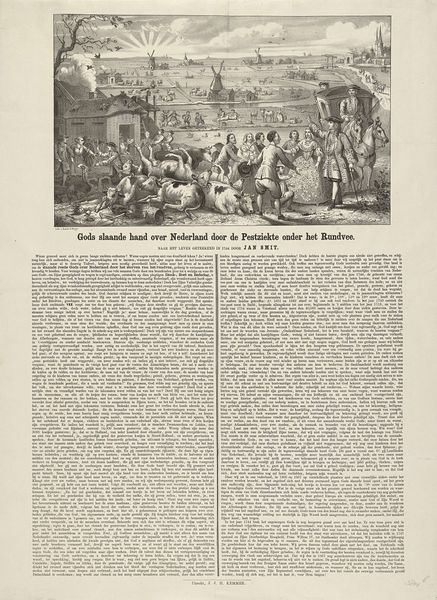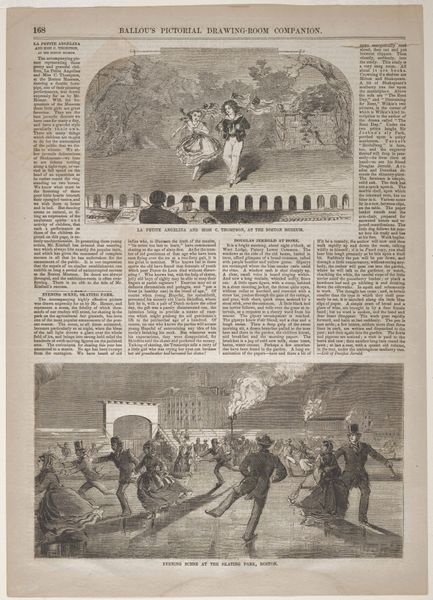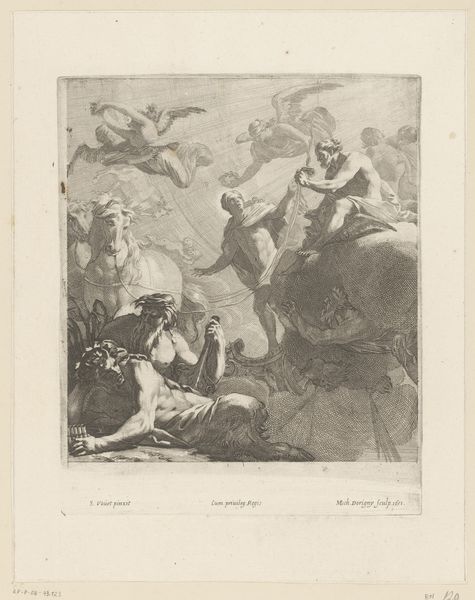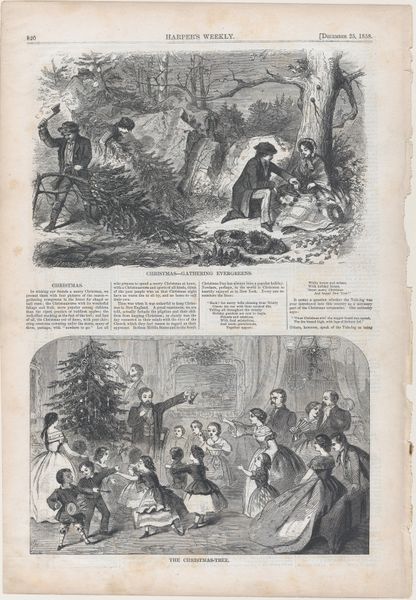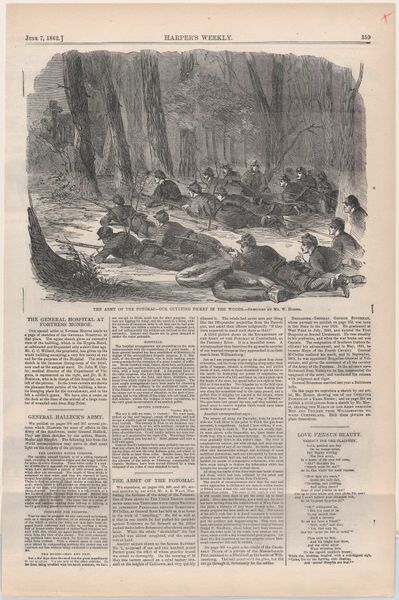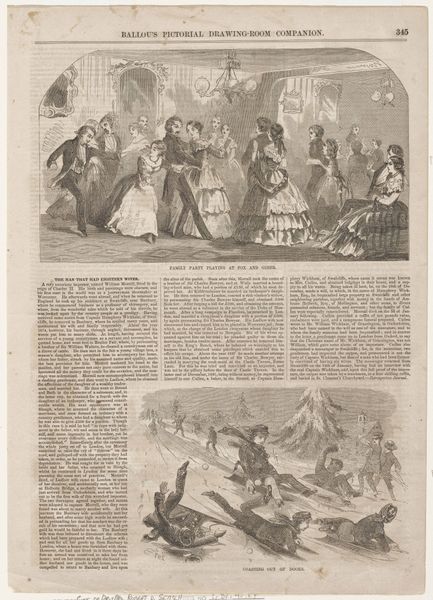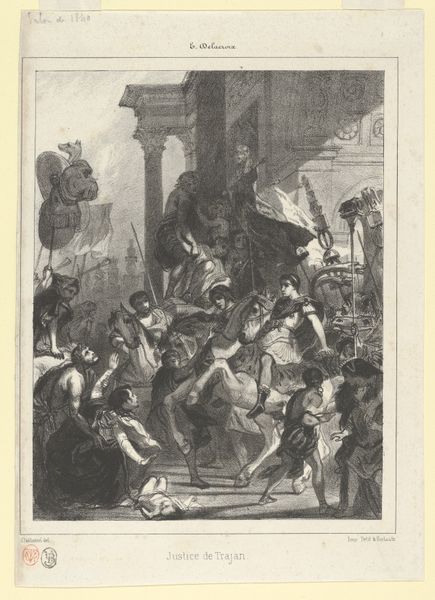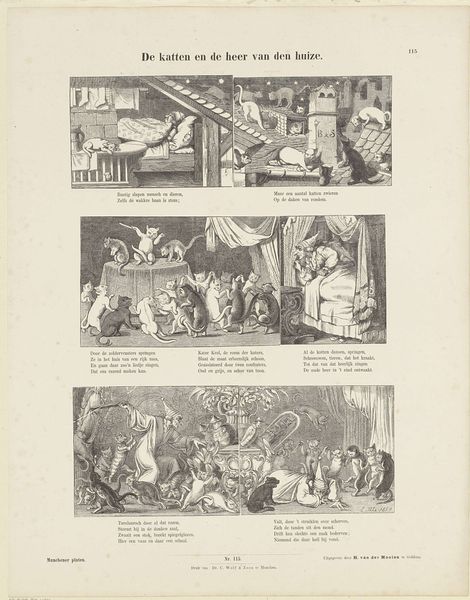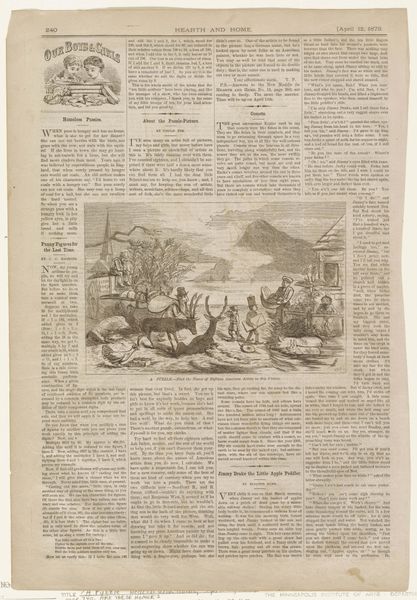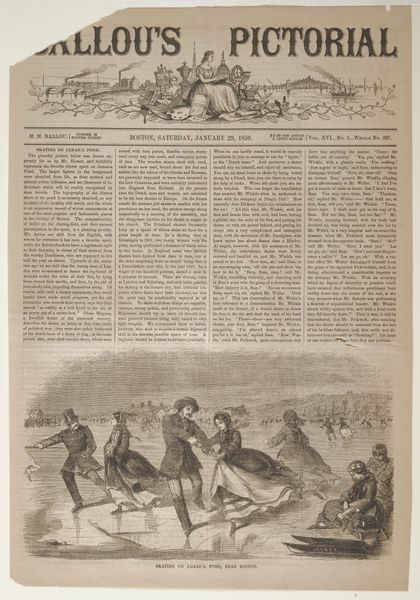
print, woodblock-print, woodcut, wood-engraving, engraving
#
toned paper
# print
#
old engraving style
#
woodblock-print
#
woodcut
#
19th century
#
united-states
#
genre-painting
#
wood-engraving
#
engraving
Dimensions: 4 7/16 x 6 3/4 in. (11.27 x 17.15 cm) (image)15 x 11 3/4 in. (38.1 x 29.85 cm) (sheet)
Copyright: Public Domain
Editor: This is "Blindman's Bluff," a wood engraving by Winslow Homer, created in 1857. The flurry of figures and limbs feels so kinetic! What story do you see unfolding here? Curator: Beyond the simple depiction of a game, I see a reflection of the societal dynamics at play in mid-19th century America. The seemingly innocent game can be interpreted as a commentary on power, perception, and perhaps even the blindness to the inequalities that existed. Consider the limited roles available to women at this time, or even the racial disparities within the depicted “homely diversions” which perpetuate through printed media and therefore reach all spheres of the cultural discourse. How do we reconcile that discomfort with what seems a scene of just simple fun? Editor: That's fascinating, I never would have considered a social commentary, only a visual capture of rural fun and games. The choice of medium, this readily reproduced print format seems like a pointed element too. Curator: Exactly. By using a widely accessible medium like wood engraving, Homer engages a broad audience with these issues. What is normalized becomes the very fabric of one's identity and worldview. And because this image is an illustration from "Ballou's Pictorial Drawing-Room Companion", an extremely popular periodical, Homer insinuates that these values are normalized enough for common leisure reading. Do you think the relatively low cost of creating these works impacted who his target audience may have been and perhaps Homer's aims? Editor: It probably broadened the reach to the working class. Maybe challenging norms in an accessible, affordable format invited critical conversation amongst more people? Curator: Precisely. It could serve as an entry point for questioning societal norms. Think about the women participating, what sort of gendered social structures are represented here? Are we looking at progress, or the status quo in visual form? Editor: That's a lot to consider, it reshapes how I understood the piece. Thank you. Curator: Likewise. Looking beyond the surface is often where we find the richest layers of meaning.
Comments
No comments
Be the first to comment and join the conversation on the ultimate creative platform.

